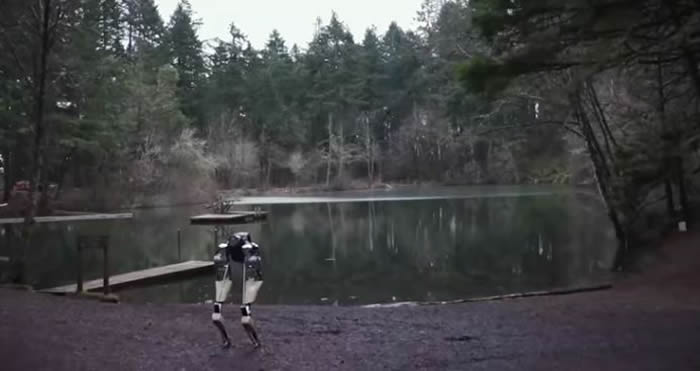Revolutionizing Robot Mobility
A company has taken a focus on legged locomotion which could revolutionize robot mobility and enable robots to go anywhere people can go. The business is one of the first from the rapidly expanding robotics program in the College of Engineering at Oregon State University.
The firm, Agility Robotics, is based in Albany, Oregon, and Pittsburgh, Pennsylvania; already has several of its first customers; will license some technologies first developed at OSU, and plans to build on this scientific foundation in their product research and development.
A leading application for this type of mobility is package delivery, company officials say. In the long term, advanced mobility will enable shipping so automated and inexpensive that its cost becomes inconsequential, opening vast new possibilities in retail trade while lowering costs for manufacturing and production.
“This technology will simply explode at some point, when we create vehicles so automated and robots so efficient that deliveries and shipments are almost free,” said Jonathan Hurst, an associate professor of robotics in the OSU College of Engineering, chief technology officer at Agility Robotics and an international leader in the development of legged locomotion.
Hurst continued: “Quite simply, robots with legs can go a lot of places that wheels cannot. This will be the key to deliveries that can be made 24 hours a day, 365 days a year, by a fleet of autonomous vans that pull up to your curb, and an onboard robot that delivers to your doorstep.”
He added: “This robot capability will free people from weekend shopping chores, reduce energy use, and give consumers more time to do the things they want to do. It effectively brings efficient automated logistics from state-of-the-art warehouses out and into the rest of the world.”
This long-term vision will take many steps, company officials said.
Some of Agility Robotics’ first sales will be to other academic and research institutions, to grow the research community and educate a new generation of engineers in this area, company officials said. What the firm now offers is a bipedal robot named ‘Cassie’ – similar to the prototype version demonstrated February 8th at OSU’s State of the University address in Portland, Oregon, by President Edward J. Ray.
Cassie the robot can stand, steer, and take a pretty good fall without breaking. It’s half the weight and much more capable than earlier robots developed at OSU.
“Our previous robot, ATRIAS, had motors that would work against either other, which was inefficient,” Hurst said. “With Cassie, we’ve fixed this problem and added steering, feet, and a sealed system, so it will work outdoors in the rain and snow as we continue with our controller testing.”
The particular issue of motors working against one another prompted some extensive theoretical research, to create the mathematical frameworks needed to solve the problem. The resulting leg configuration of Cassie looks much like an ostrich or other ground-running bird.
“We weren’t trying to duplicate the appearance of an animal, just the techniques it uses to be agile, efficient and robust in its movement,” Hurst continued.
“We didn’t care what it looked like and were mostly just working to find out why Mother Nature did things a certain way. But even though we weren’t trying to mimic the form, what came out on the other end of our research looked remarkably like an animal leg.”
Cassie, built with a 16-month, $1m grant from the Advanced Research Projects Agency of the US Department of Defense, is already one of the leading innovations in the world of legged robotics.
Company officials say they plan to do all initial production in Oregon and will focus their business on the commercial applications of legged robots. Hiring is anticipated for research, production and development.
Hurst concluded: “The robotics revolution will bring with it enormous changes, perhaps sooner than many people realize. We hope for Agility Robotics to be a big part of that revolution. We want to change people’s lives and make them better.”
More information: TechXplore


